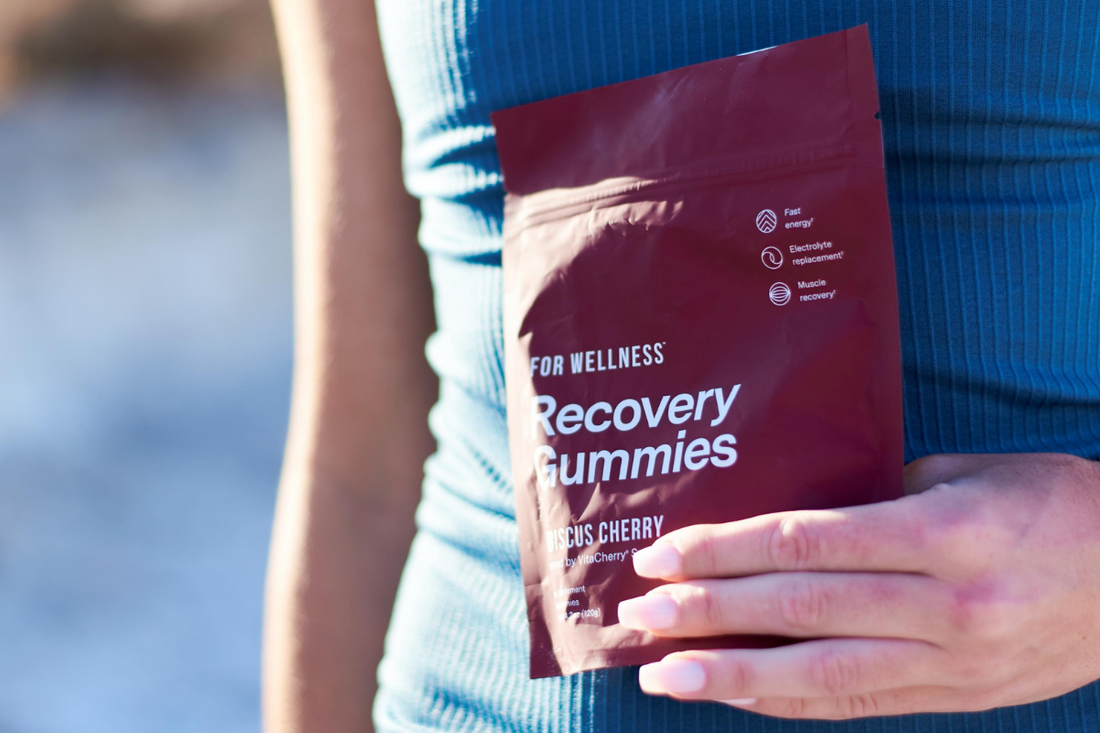Want to add a few healthy years to your life?
A consistent workout routine that exceeds the minimum exercise recommendations can extend your life and deliver a mortality reduction of up to 35-42%.
We all know the benefits of exercise - endorphin release, improved health, improved confidence, the list goes on.
However, there is one major drawback: muscle soreness.
Stiff and sore muscles go hand in hand with a good workout, but overly sore muscles can be a literal pain. They can also prevent you from exercising as frequently as you’d like, and there’s nothing more annoying than losing momentum when you’re on a roll!
Fortunately, there are some natural remedies to muscle soreness, among them: anthocyanins.
Anthocyanins are a flavonoid present in certain types of red and purple fruits and vegetables. These potent pigments hold anti-inflammatory properties.
If you're suffering from sore muscles every time you work out, you might be prone to inflammation.
Including anthocyanin-rich foods in your diet can help you target and tame this inflammation response.
Ready to take advantage of anthocyanin's benefits? Read and save this list of top anthocyanin-alicious foods!


Recovery Gummies - Restore
-
Supports muscle recovery and combats soreness.
-
Full of antioxidants and replenishes electrolytes
-
Boosts energy and focus with all-natural ingredients.
-
Tastes incredible with juicy cherry flavors.
Berries
Given that anthocyanins are what cause the red and pink pigmentation in fruits, it makes sense that colorful berries are a good place to start if you’re looking to add them to your diet.
Interestingly, the anthocyanin content of different types of berries varies greatly.
Raspberries contain 760 to 4,270mg per kilo, and black currants are also around that mark, while red currants contain just 119-186mg per kilo.
Chokeberries and elderberries are both super potent, with 5,000 to 10,000mg and 2,000 to 15,600mg of anthocyanins respectively. However, you’re far less likely to find either of these berries on your supermarket shelves, so it’s probably best to look for options that are more readily available!
Blueberries are one such choice, delivering up to 5,300mg of anthocyanins per kilogram (or 50mg of anthocyanins for a third of a cup).
They’re also potentially linked to reducing biomarkers for diseases like type 2 diabetes and neurological decline.
Eat your blueberries fresh, or try them in a berry smoothie.
Tart Cherries
Cherries are another chart-topper when it comes to anthocyanin content.
Both tart and sweet cherries contain anthocyanins. However, tart cherries, such as Montmorency cherries, contain higher total levels of polyphenols and up to twice as many anthocyanins.
Studies have shown Montmorency tart cherries can benefit athletes by helping protect against post-exercise muscle strength loss and soreness, as well as aiding in muscle recovery.
If you want the benefits of anthocyanins in your diet, you can eat fresh tart cherries, but we will warn you - they have that name for a reason! If you want to avoid sour flavors, try a tart cherry extract.
Our tart cherry Recovery Gummies™ contain a potent tart cherry extract that contains 15x the anthocyanins of the next leading tart cherry powder.
Besides packing an effortless anthocyanin punch, our Recovery Gummies™ are also a source of electrolytes and glucose. In short, everything you need in a post-workout pick-me-up.
Electrolytes are a key player in fluid balance and nutrient absorption. We use both potassium and sodium—perfect for enhanced cell hydration.
Plus, unlike fresh cherries, our Recovery Gummies™ are super transportable and last far longer. Thanks to their high melting point, you can keep our Recovery Gummies in your dash, leave them in your gym bag, you name it—they'll be fresh and ready to enjoy when you need them.
Vegetables
So far we've only touched on fruit, but vegetables can also pack a bit of anthocyanin punch.
Purple sweet potatoes rank as some of the most potent, with a respectable 5,190 mg per 1 kg of fresh weight.
Eggplant also contains a surprisingly high level of anthocyanins with roughly 7,500 grams per kilo.
Interestingly, beet is not a stand out source of anthocyanins, despite its deep purple hue. The purple in beet is due to betalain pigments, although they're also antioxidants so beets are still a healthy choice!
Purple Varieties of Regular Vegetables
Have you ever wondered what's the point of buying fancy, purple carrots, corn, and cauliflower?
Just about any ‘purple’ variation of your regular vegetables (though as we pointed out above, there are some exceptions!) is likely to have a higher anthocyanin content.
Black Rice
If you choose carefully, you can even get anthocyanin from whole grains. Black rice isn't just a trendy alternative. One of the reasons why it's considered so much healthier than regular rice is thanks to its anthocyanin content.
Black rice also contains more nutrients than white rice.
Say Goodbye to Muscle Soreness With the Help of Anthocyanins
Upping your intake of anthocyanins is a great, natural way to aid recovery, support your body, and keep stiffness at bay.
But, what if you don't have the space in your day to ensure you're eating lots of pigmented fruit and veg?
Sometimes life gets busy, but that doesn't mean you need to wave goodbye to your health goals.
Here at For Wellness, we want to make healthy solutions easy.
Our Recovery Gummies are anthocyanin-rich, specially formulated to help your body bounce back after a workout.
Give them a try or check out some of our other functional foods today!

